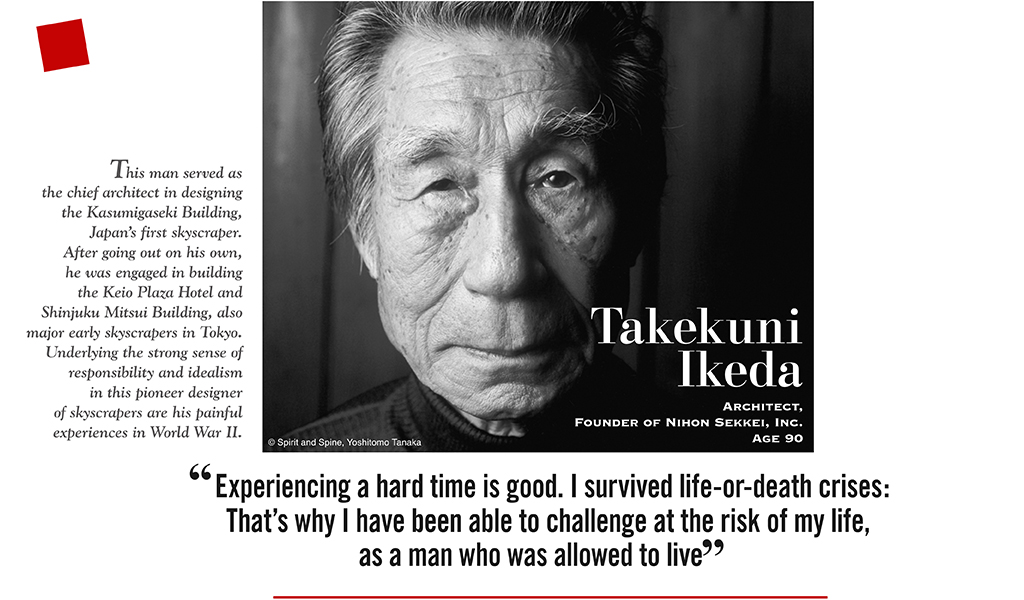
While he struggled during the social upheaval under U.S. occupation, he came to feel that the rebuilding of Japan would be his responsibility and mission. He decided to study architecture and embarked upon his career. In addition to his skyscrapers, his other large projects have included Tsukuba Academic City and theme parks such as the Nagasaki Holland Village, through the Huis Ten Bosch in Sasebo, Nagasaki Prefecture. While engaged with these projects, he also felt a fervent commitment to environmental conservation. Although he directed a big architectural firm, he strongly objected to any development that would harm the environment. Considering himself as having died once already, he did not hesitate to resist political or economic authorities if he considered their views short-sighted.
Ikeda has been active in environmental protection for areas such as Tomonoura, a port of Fukuyama, Hiroshima Prefecture, as well as Omura Bay where he set up his home in Nagasaki Prefecture. He has also been engaged in educating people throughout the country. A culture truly close to nature has been an important value for the Japanese from the earliest times. He has never spared his efforts to hand down the beautiful rivers and mountains, and his awe for nature, to the next generation.
The Shinjuku Mitsui Building reflecting the Keio Plaza Hotel in its windows.

Takekuni Ikeda
Born in Shizuoka Prefecture in 1924. Attended Shonan High School in Kanagawa and then the Naval Academy. Graduated from the Department of Engineering, Tokyo University. Entered Toshiro Yamashita Architectural Design Office. In 1967, founded Nihon Sekkei, Inc. He was consecutively Chairman of the firm, Vice President of the Architectural Institute of Japan, and Professor at Nagasaki Institute of Applied Science. As recent works, he published “Jisedai eno Dengon (Message to Next Generation)” in collaboration with Akira Miyawaki, Jiyusha, and “Nijuisseiki wa Edo ni Manabe (Learn Edo for the 21st Century)”, A&A Publishing.
Cooperation: Mr. Akira Miyawaki, Mr. Michio Iwata, President, Service Association of the Makurazaki Memorial Peace Observatory
This article originally appeared in “Shinsei” magazine, July 2013 issue, published by RINRI Institute of Ethics. Partially rewritten to update for this internet release.
Photo of the last battle of the Japanese battleship Yahagi displayed
in Ikeda’s house. There were 446 sailors killed during the battle,
and over 3,700 in the entire naval fleet in the suicide attack operation.





































































































